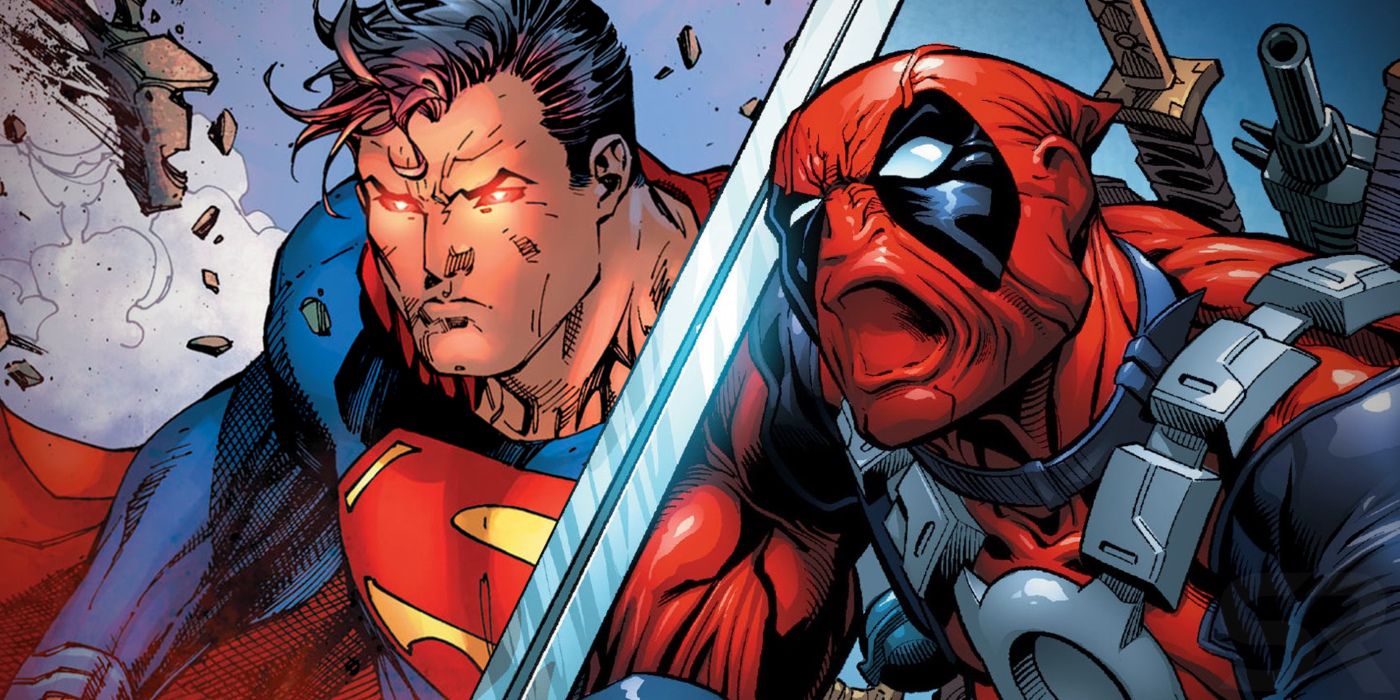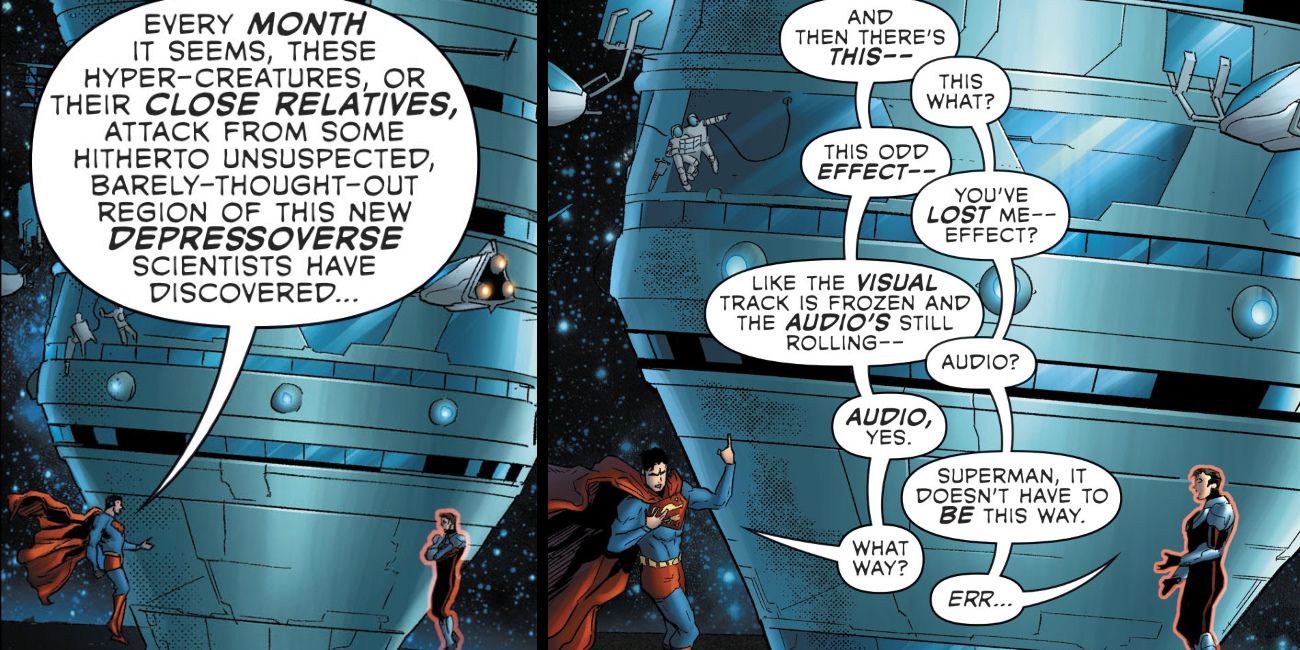As the heart and soul of the DC Universe, it's safe to say Superman is about as far away from the irreverent, murderous Deadpool as a superhero can get. But in one comic, the Man of Steel shattered the fourth wall by not only noticing he lives in a comic book... but how strange that reality is for the characters inside of it.
These days the 'fourth wall' between readers and comics isn't what it used to be, with both Marvel and DC heroes aware they exist in a comic. Even so, it's difficult for a character as stoic, resolute, and even rigid as Superman to cross such a 'meta' line -- and it would be even harder to cross back over it, once he acknowledged the reality-breaking audience following his adventures. But if anyone were capable of pulling it off, it's Grant Morrison, the acclaimed writer who first had DC's Animal Man look right at the reader, in the first of many meta-textual stories and events he would later create. But he saved an incredible scene just for Superman.
Before fans worry about seeing the image of Superman shaken, it should be pointed out that this scene is delivered in the pages of Green Lantern: Blackstars #2, which is set in a rewritten reality, and eventually set back to normal. But not before the Green Lantern--sorry, Blackstar Hal Jordan can face Superman in Earth's orbit. In classic Morrison fashion, Superman complains about DC's depressing universe, referring to actual gruesome events and stories taking place alongside his Green Lantern series. But things are taken one step further when Superman moves from referencing other comics... to the actual contradiction of a comic's panel art and its written dialogue.
It's simple enough for a character like Gwenpool to break reality, or for Deadpool to get a laugh by telling the comic Avengers about Endgame. But Morrison decides to call out the core contradiction that comic books inherently rely on, and is agreed to -- even unconsciously -- by comic book readers. The contradiction that, as Superman himself puts it while literally pointing to the text bubbles through which comic book dialogue is delivered, the limitation of static art means comics play out as if "the visual track is frozen and the audio's still rolling."
Like the best examples of Morrison playing with reality and subjectivity, it's a joke readers can instantly grasp and appreciate... before it actually puzzles the mind, as readers try to perceive how these rules actually would work from the perspective of the characters in the actual scene. It seems strangely fitting that when Superman, the first and greatest of comic book superheroes, decides to break the fourth wall, he delivers one of the most fundamental, mind-numbing paradoxes comic fans may ever encounter.


